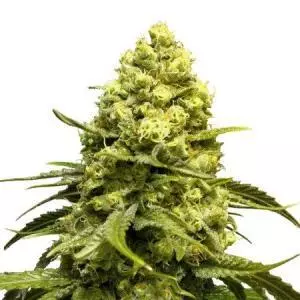The history of cannabis usage for both recreational and medicinal reasons dates way back to ancient times. In fact, there are reports that link the usage of weed and the dead before the 1960s. However, something must have led to learning that marijuana was indeed useful in mortuary rituals.
The first-ever recorded instance of earliest marijuana use occurred as from 8000BC in Taiwan, an ancient village. Necessarily, Taiwanese used fibers from a species of the Cannabis Sativa plant, called hemp (industrial hemp) to spin fiber.
As this was their first fabric to manufacture, they had to go beyond the norm and do away with animal skin clothing. As days forged ahead, the Taiwanese used a different cannabis species – marijuana, literally referred to hemp’s cousin.
As years went forward, the usage of cannabis continued to rock across different parts of the globe. 4000BC reached and the Chinese of the Pan’po village adopted the usage of hemp as a primal food crop, according to archeological evidence.
There is also a Frequently Asked Question about “where did marijuana originate?” Well, originating is relative in this case. For example, as mentioned above, the recording occurred in 8000BC, and it’s associated with the Taiwanese. Nonetheless, Central Asia were the first people to domesticate marijuana.
To answer that query, scientists say that marijuana is native to Central Asia and the subcontinent.
Medicinal properties
The use of cannabis for its medicinal benefits started anciently enough. Some traditional physicians used to mix marijuana and other medicine to solve maladies such as pain and several other ailments. See the steps in which cannabis got used as medicine below.
Hua Tuo, an ancient Chinese surgeon, gets credited as the first recorded person to use marijuana in place of an anesthetic. That happened in c. 140-208. He did so by turning the cannabis plant into powder and added it to wine to administer it effectively before doing the surgery.
Emperor Shen-Nung recognized cannabis as a powerful remedy for alleviating more than 100 medical conditions. The conditions comprise malaria, rheumatism, and gout. During this time, there was the first-recording of cannabis as a powerful medicinal drug. This happened in 2737BC, Pen TS’ao Ching.
In Atharva Vedas, cannabis got recognized as a freedom bringer and a critical source of happiness by the Hindu between 2000 and 1000BC.
The Ayurvedic used medicine for religious purposes to explore ailments such as rabies, anxiety, and epilepsy between 2000BC and 1000BC.
In 1550BC, Egyptian papyrus (Ebers Papyrus) discovered that cannabis could be used for alleviating inflammation.
Greco Romans discovered that cannabis could be used for alleviating labor pains, toothaches, and earaches between 450 and 200BC.
In 1000AD, two Arabic scholars, al-Badri and al-Mayusi, regarded cannabis as helpful in treating epilepsy.
Avicenna claimed that cannabis is efficient for treating edema, gout, and headaches in 1025AD. Scientists studied his claims widely between the 13th and 19th centuries. This led to a valuable impact on Western medication.
Arab traders spread cannabis to India and Eastern Africa to treat fever, malaria, and dysentery.
Napoleon took cannabis to France, back from Egypt, in 1798, where it got studied to determine whether it could be ideal for relieving pain or its sedative effects. It got discovered that cannabis would help solve tumors and Candice.
William O’Shaughnessy, an Irish doctor, introduced the medical benefits of cannabis to the Western world in 1839. In conclusion, he claimed that medical marijuana had no adverse effects. This led to a rise in cannabis for pharmaceutical drugs.
Cannabis as food
As the Central Asians migrated and settled, they used to cultivate marijuana for food as from 8000BC. These “food-bearing” plants used to get developed depending on the climatic conditions of a specific area.
In the same year, the Japanese also used cannabis as a source of food according to Archaeological evidence.
The Scythians used to eat hemp seeds for ceremonial uses between the 5th and 2nd century BC.
Fibers
It is impossible to mention ancient marijuana names without talking about its uses as fiber and for cloth—the Japanese cultivated cannabis since the pre-Neolithic times for its sturdy fibers.
The Chinese used hemp fiber during the Neolithic times and later started using it for manufacturing clothes, ropes, shoes, and traditional pieces of paper.
Psychoactive properties
During the pre-Neolithic moments and the ancient Assyrians, and the Japanese discovered that cannabis could be used for its plentitude of psychoactive properties.
Rituals
The Indian sub-continent used marijuana as an entheogen in 1500BC. Also, different pagan and shamanic cultures used it to ponder different religious functions, while the Egyptians used it to mummify the deceased ones.
In summary
While there are different stories about the history of cannabis use, there are several indisputable facts as incorporated above. Necessarily, the usage of cannabis started more than 12000 years ago, and the evolution of marijuana ancient times began in Central Asia steppes, which is today Southern Siberia and Mongolia.





